Year 9 Probability Worksheets
Expected Frequencies
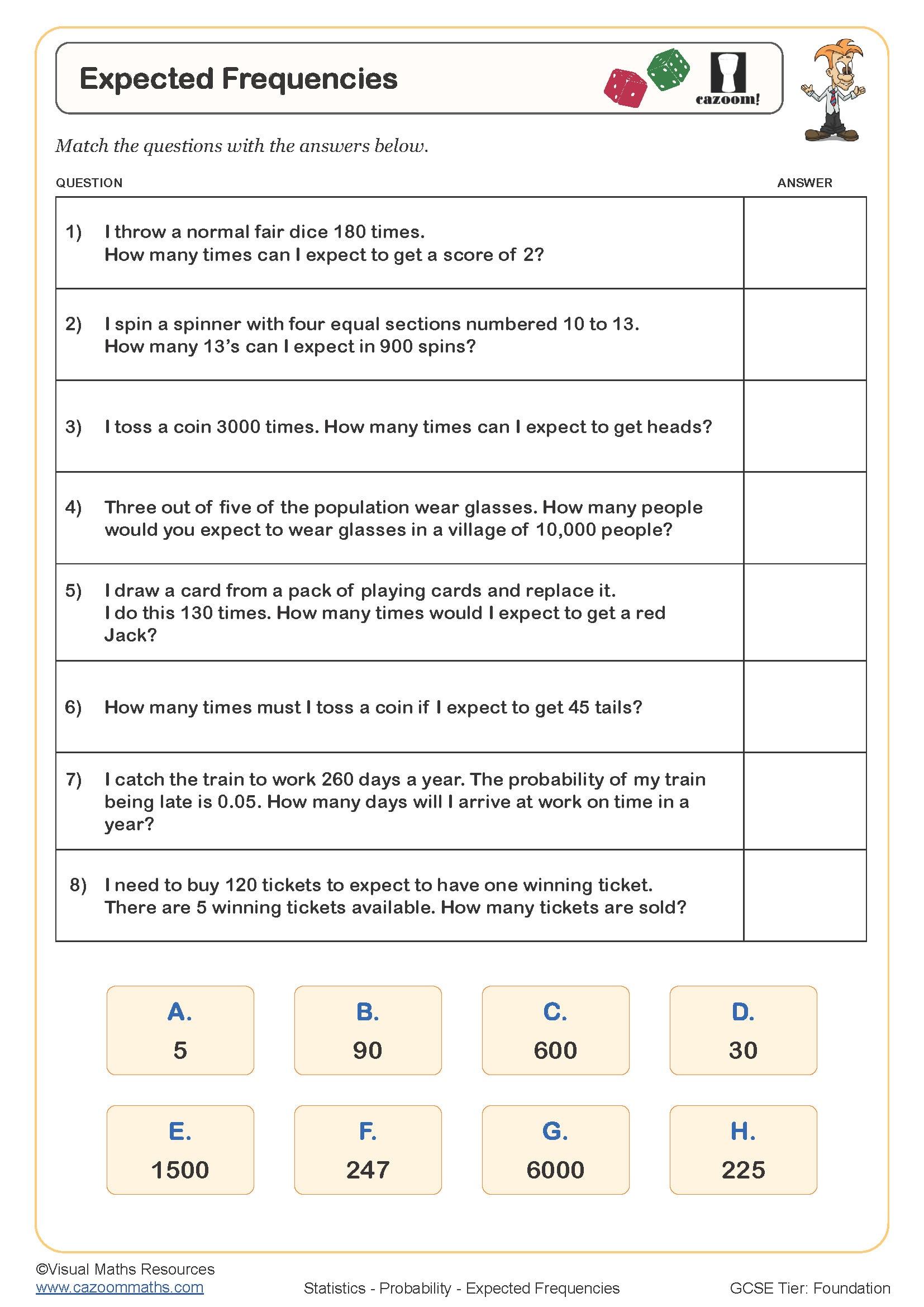
Experimental Probability
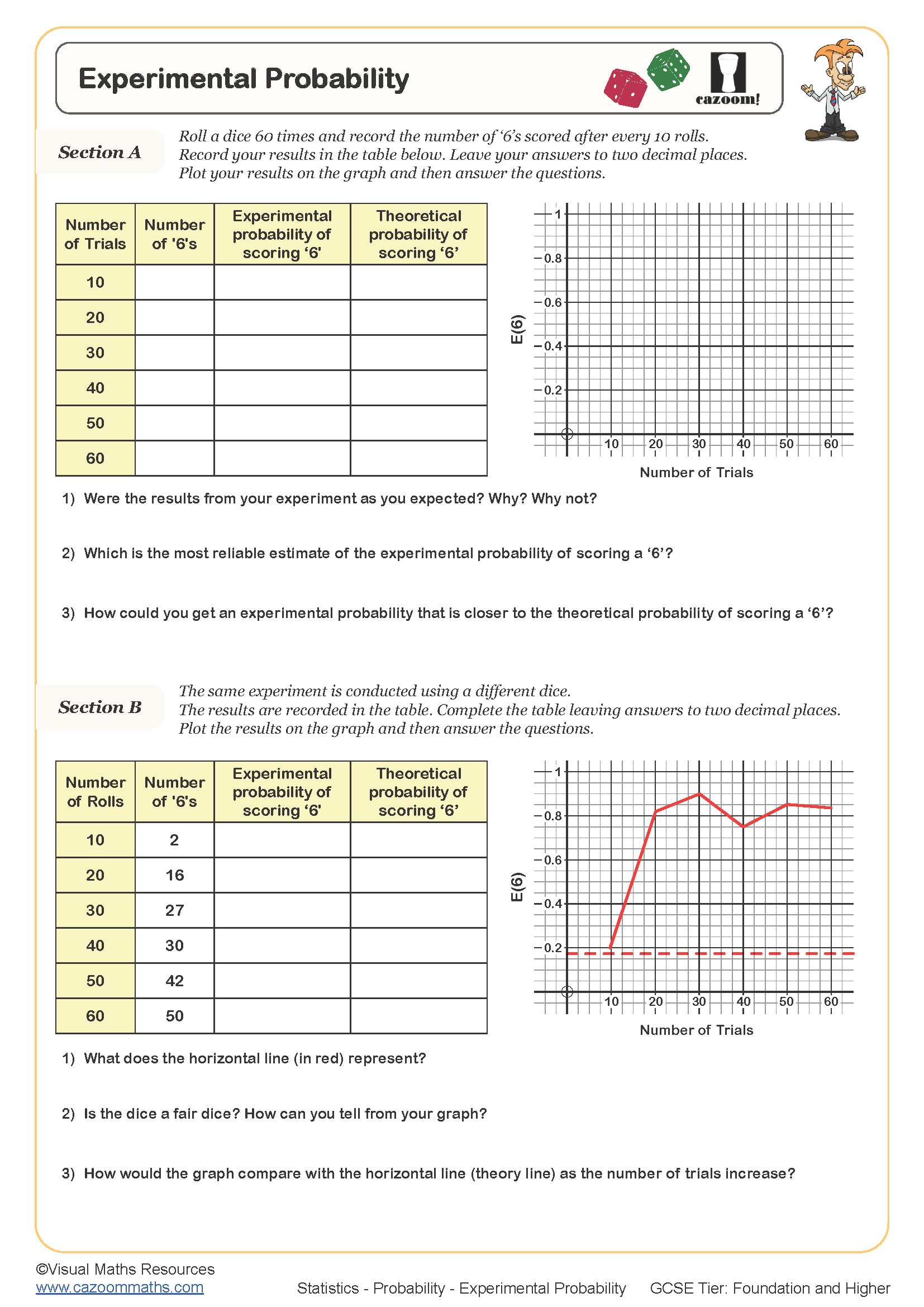
Mutually Exclusive and Exhaustive Events
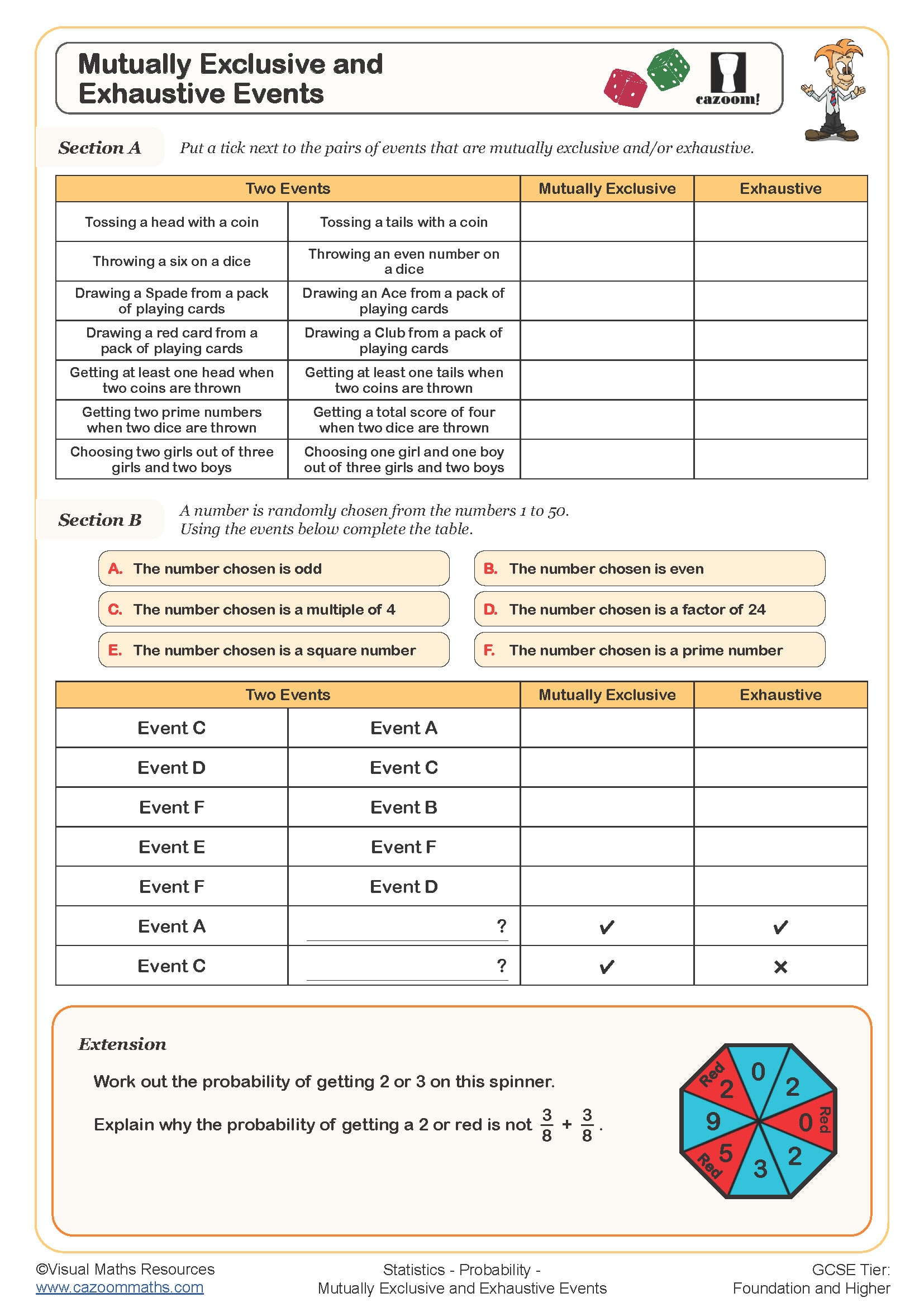
Naming Sets (A)
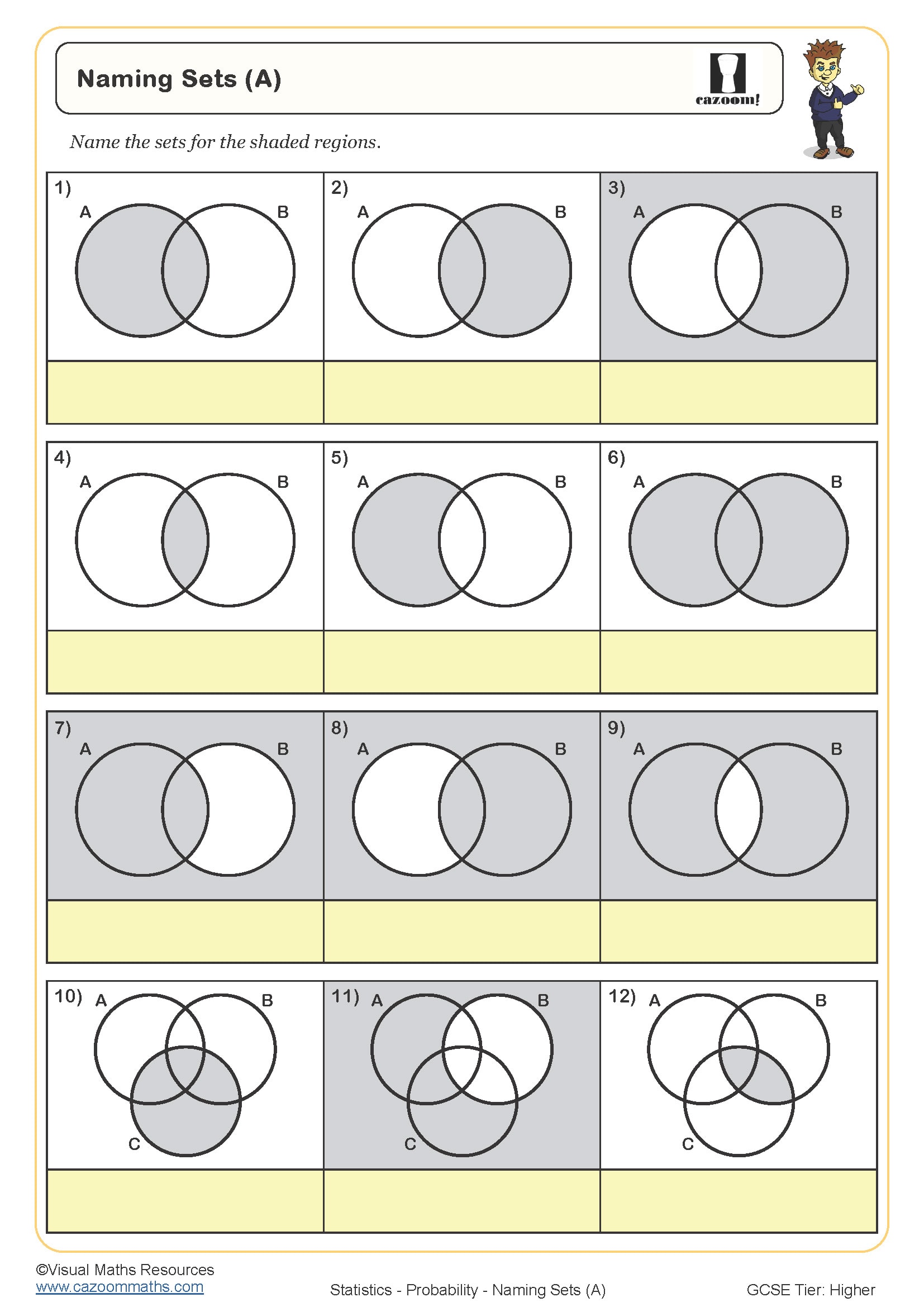
Naming Sets (B)
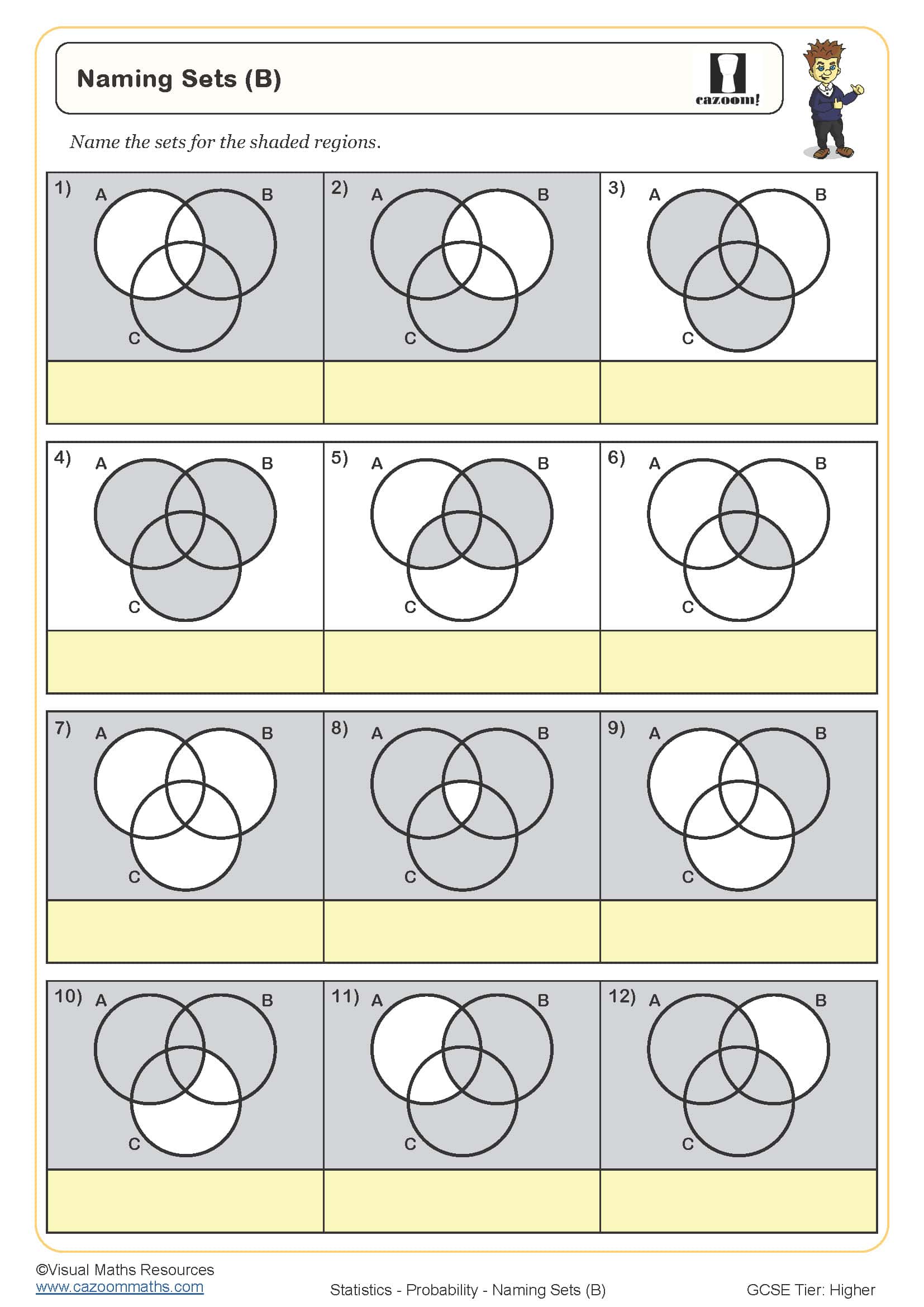
Playing Cards and Probability
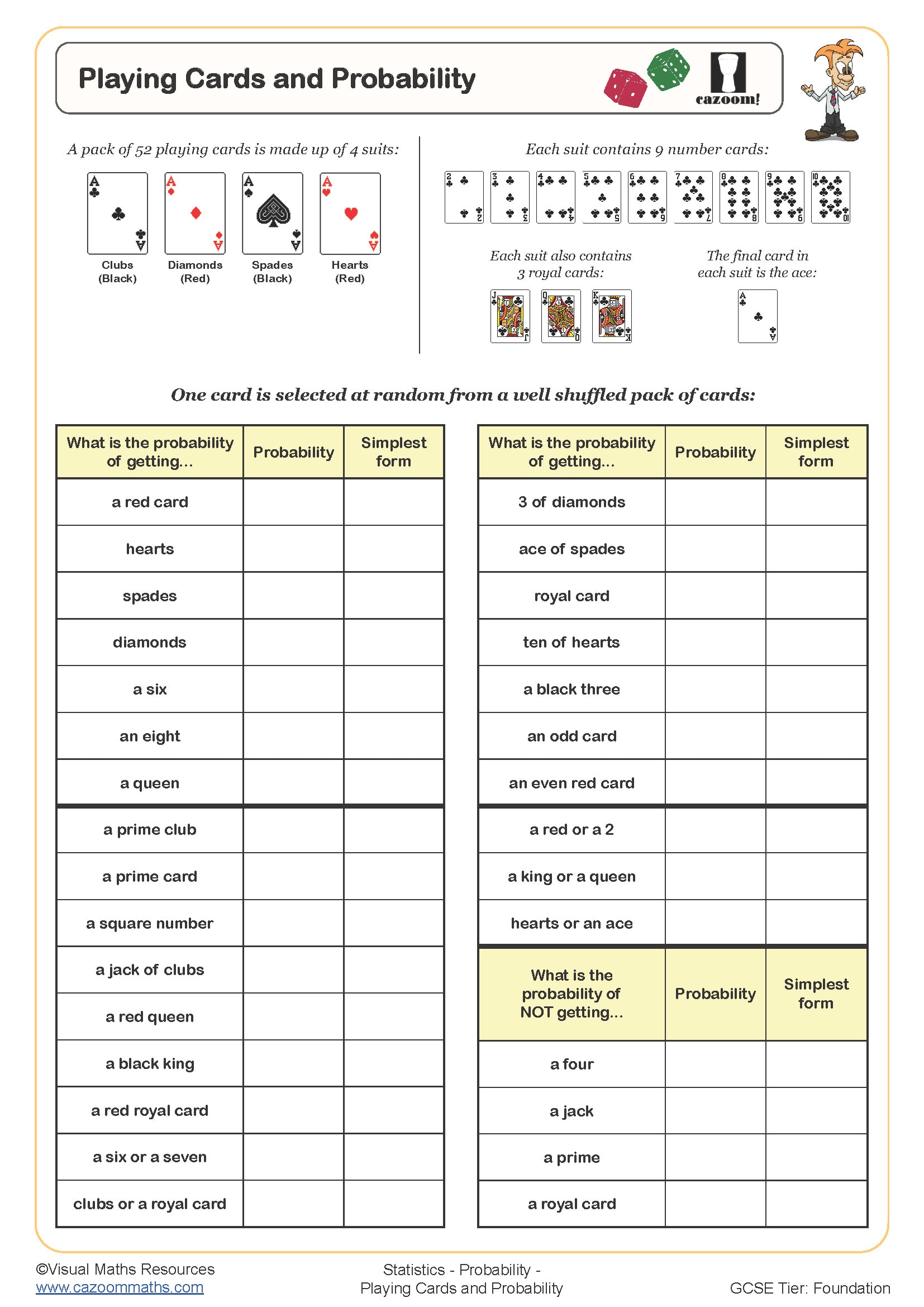
Probability Statements - True or False
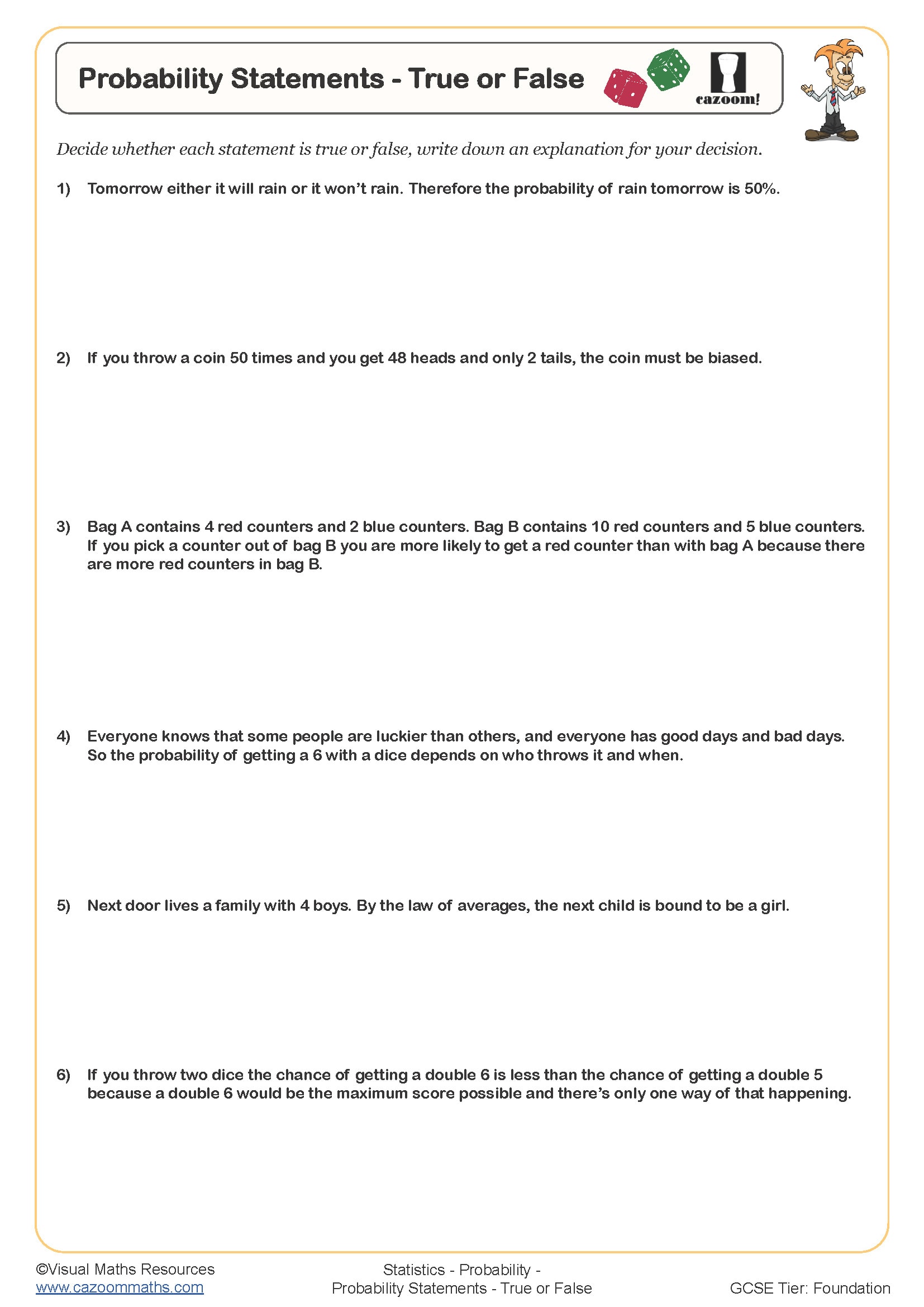
Relative Frequency
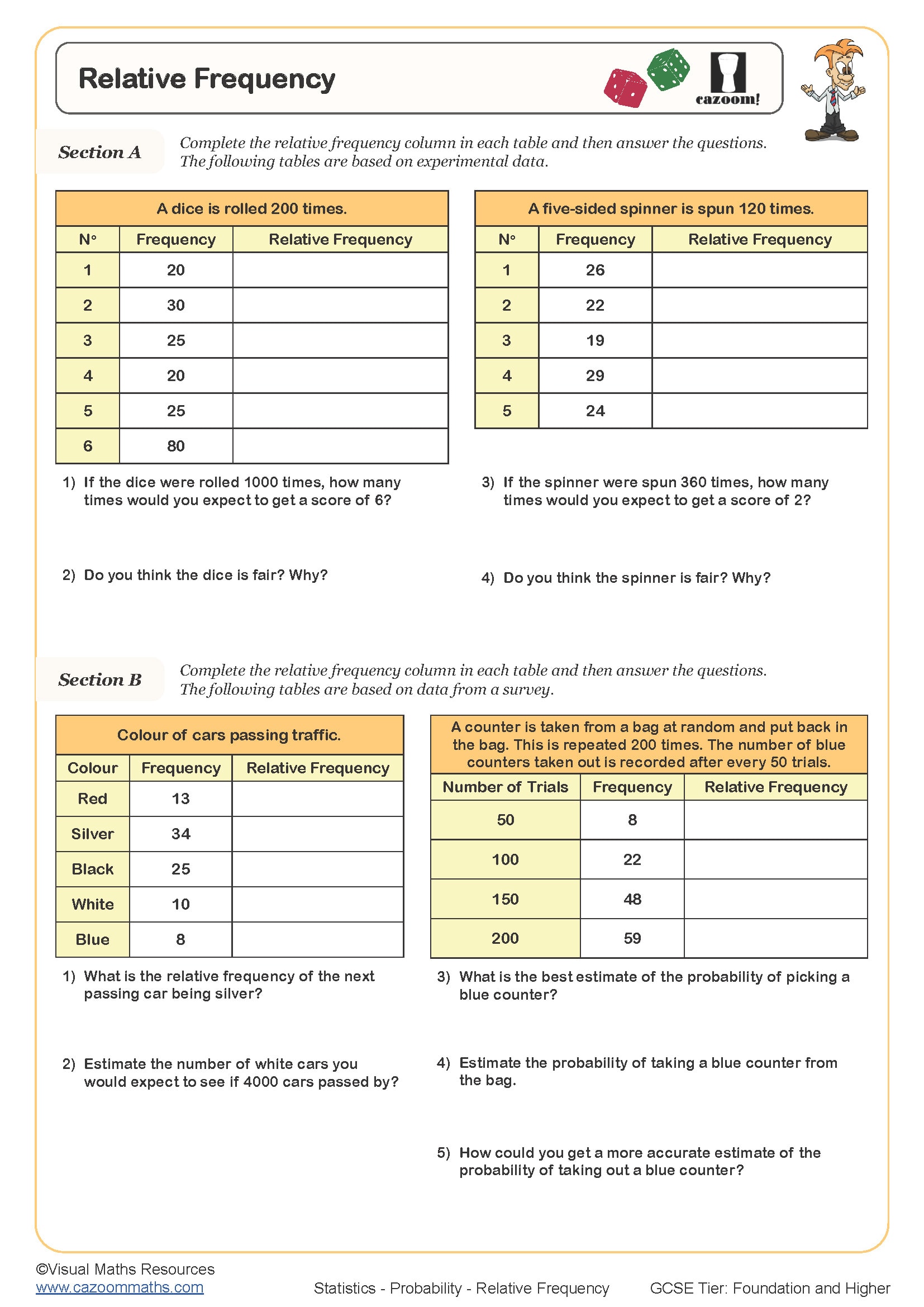
Sample Space Diagrams
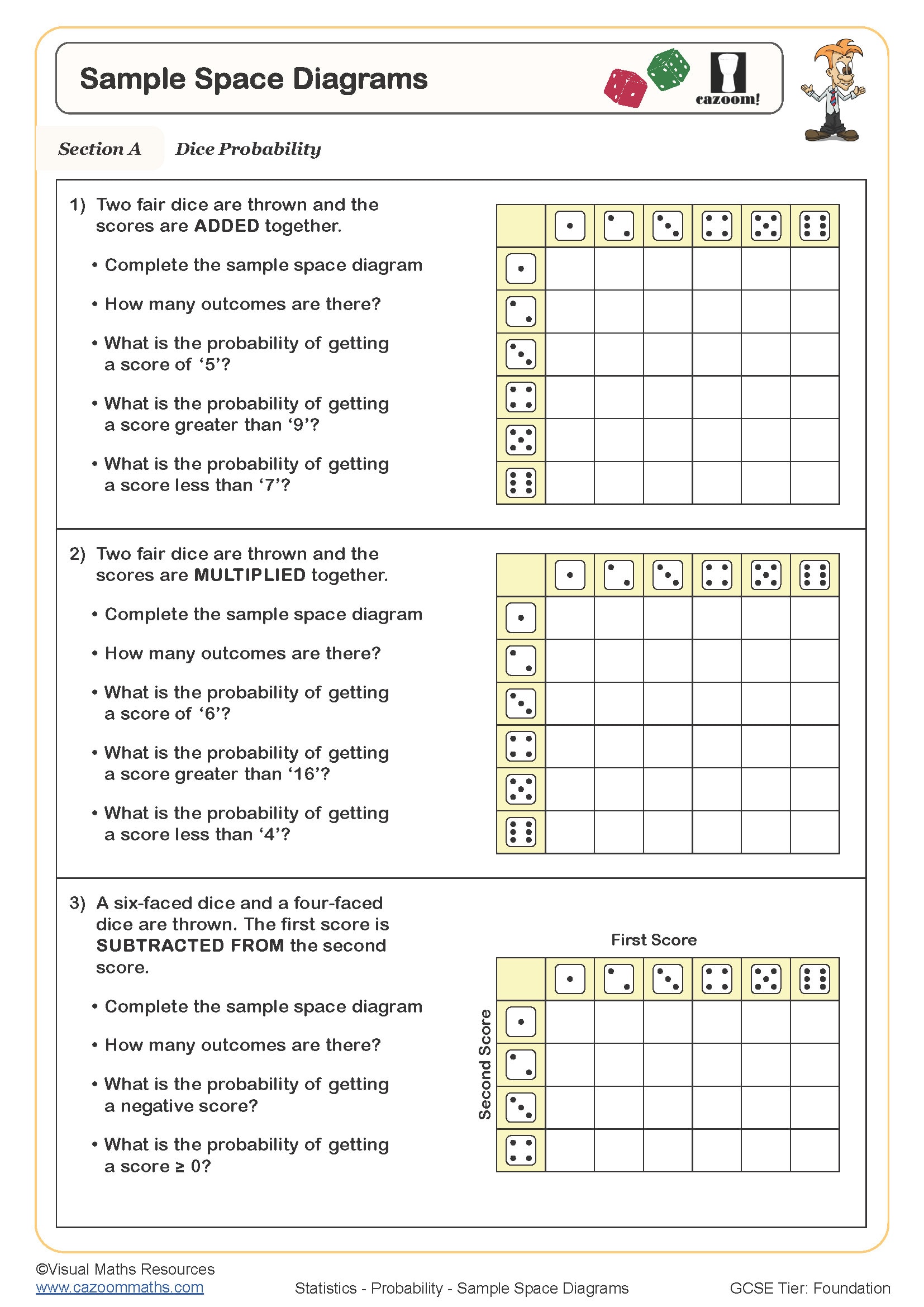
Set Notation
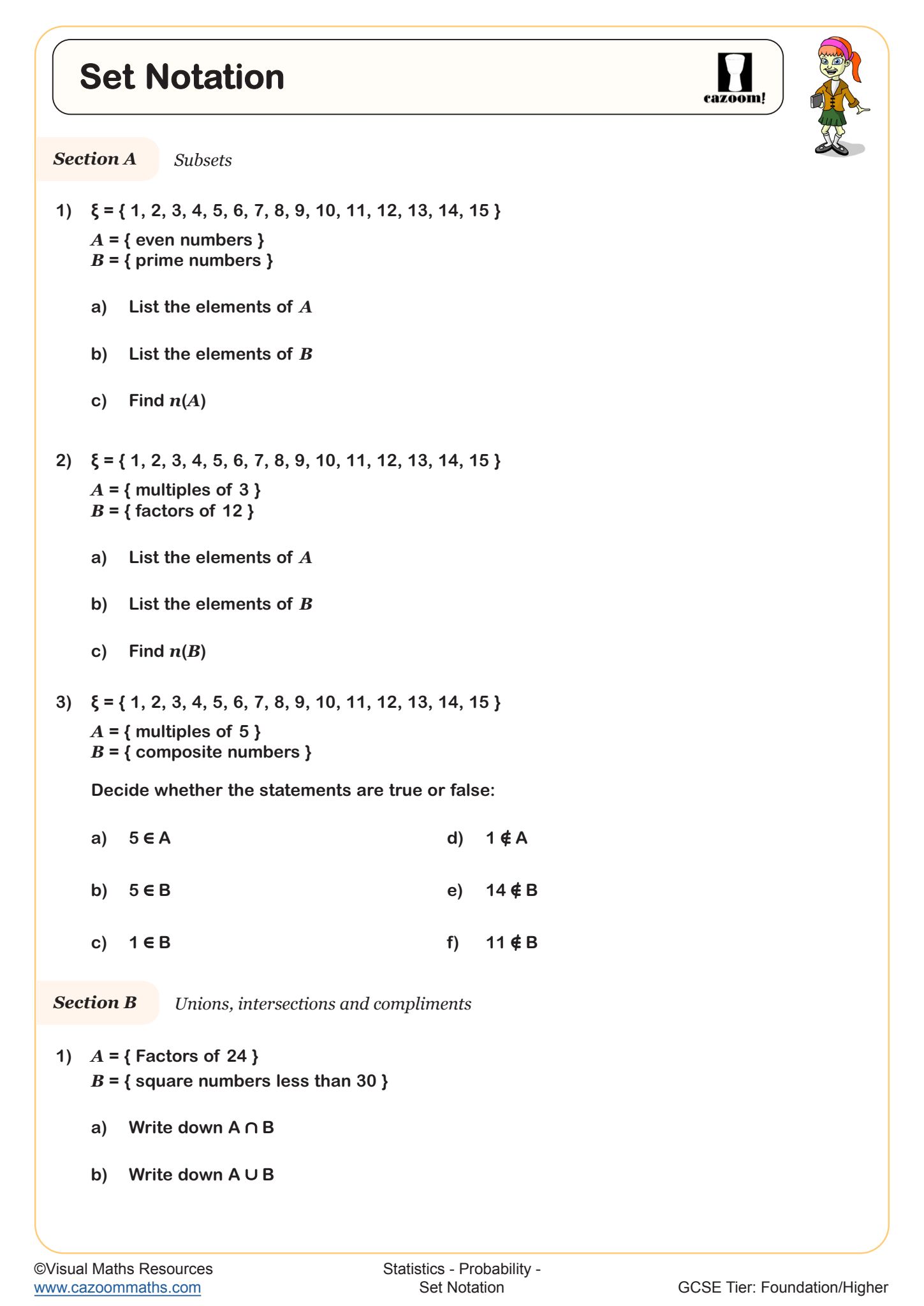
Sets and Venn Diagrams (A)
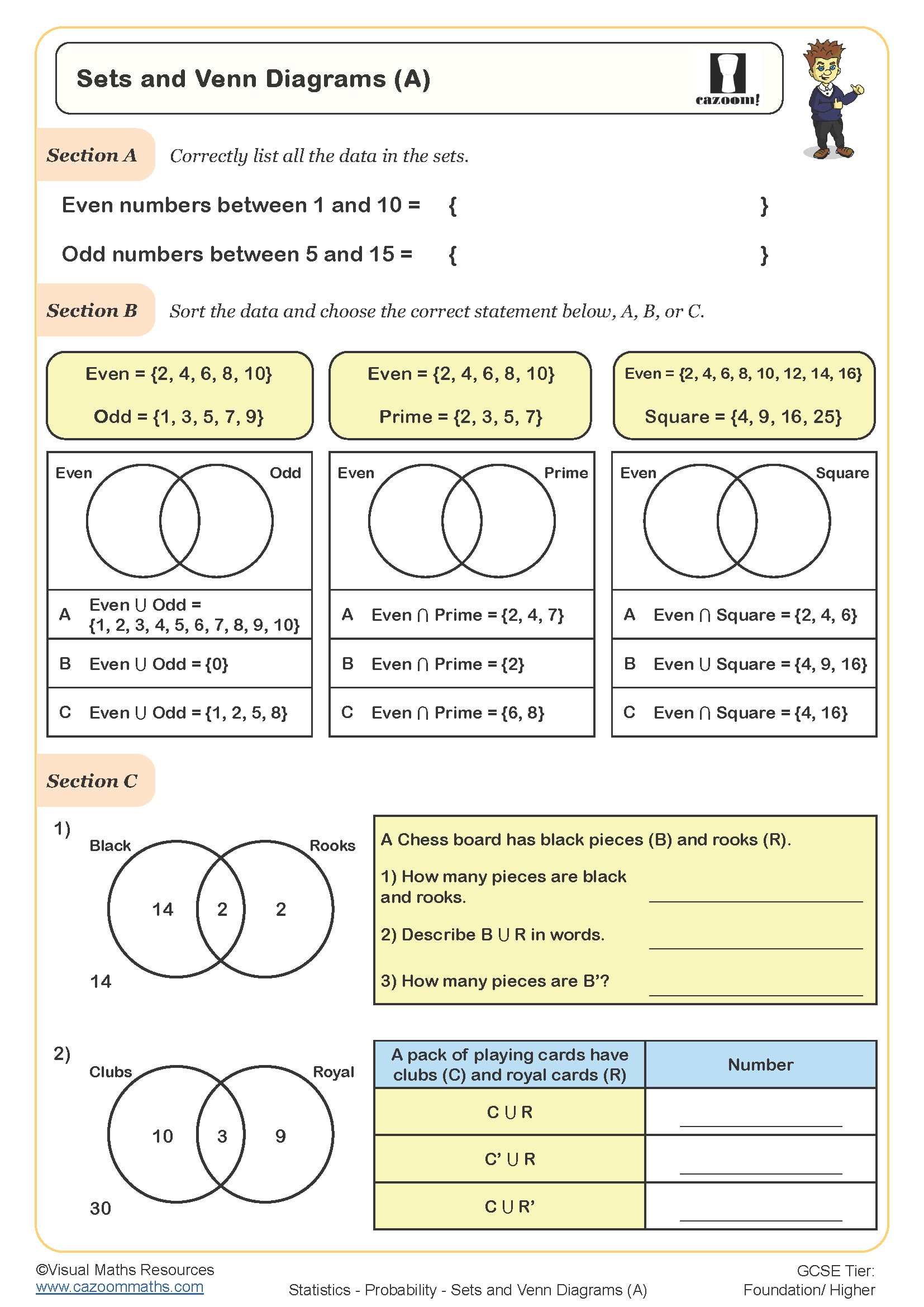
Sets and Venn Diagrams (B)
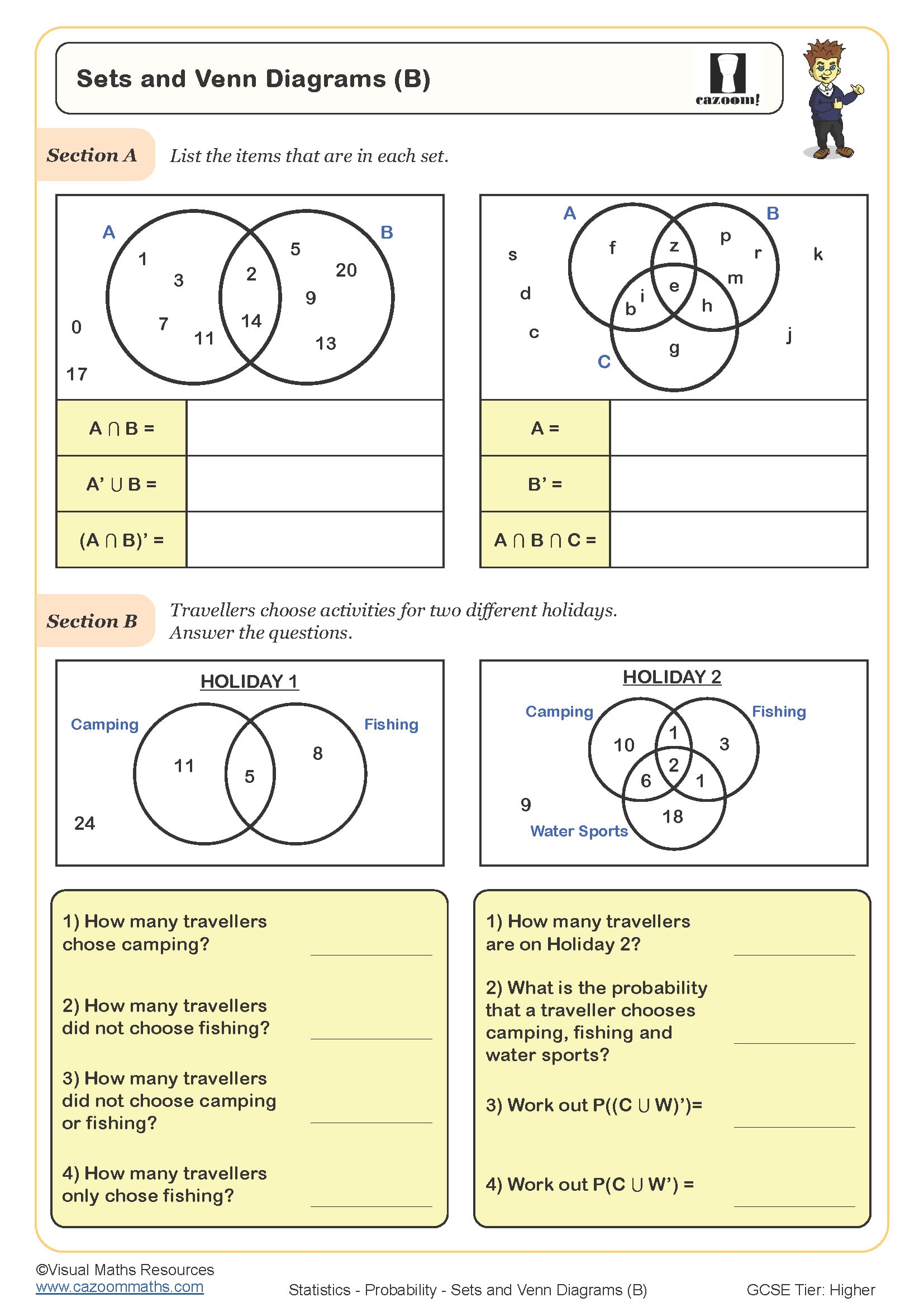
Sums to One
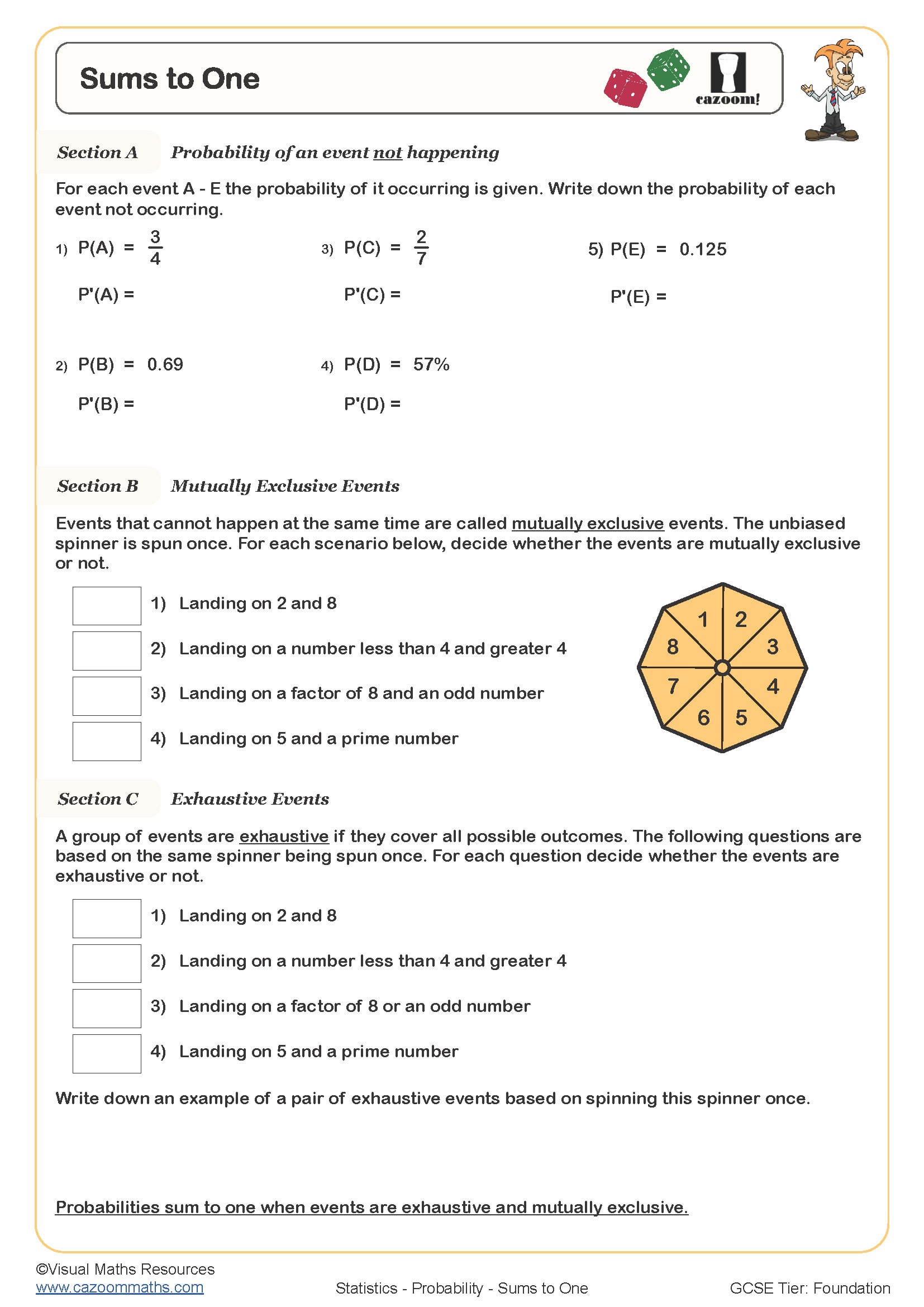
Systematic Listing
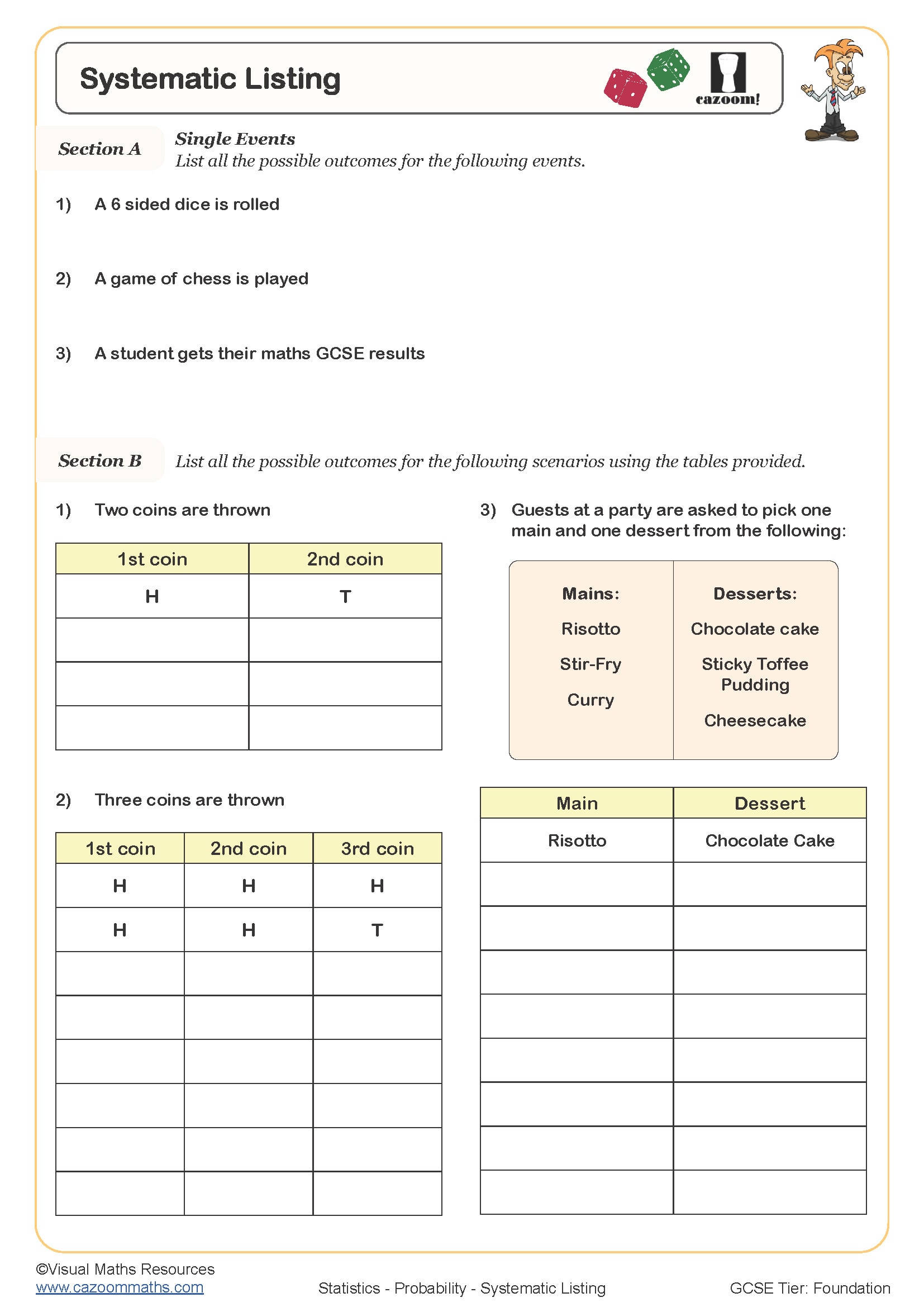
Using Venn Diagrams to Solve Problems
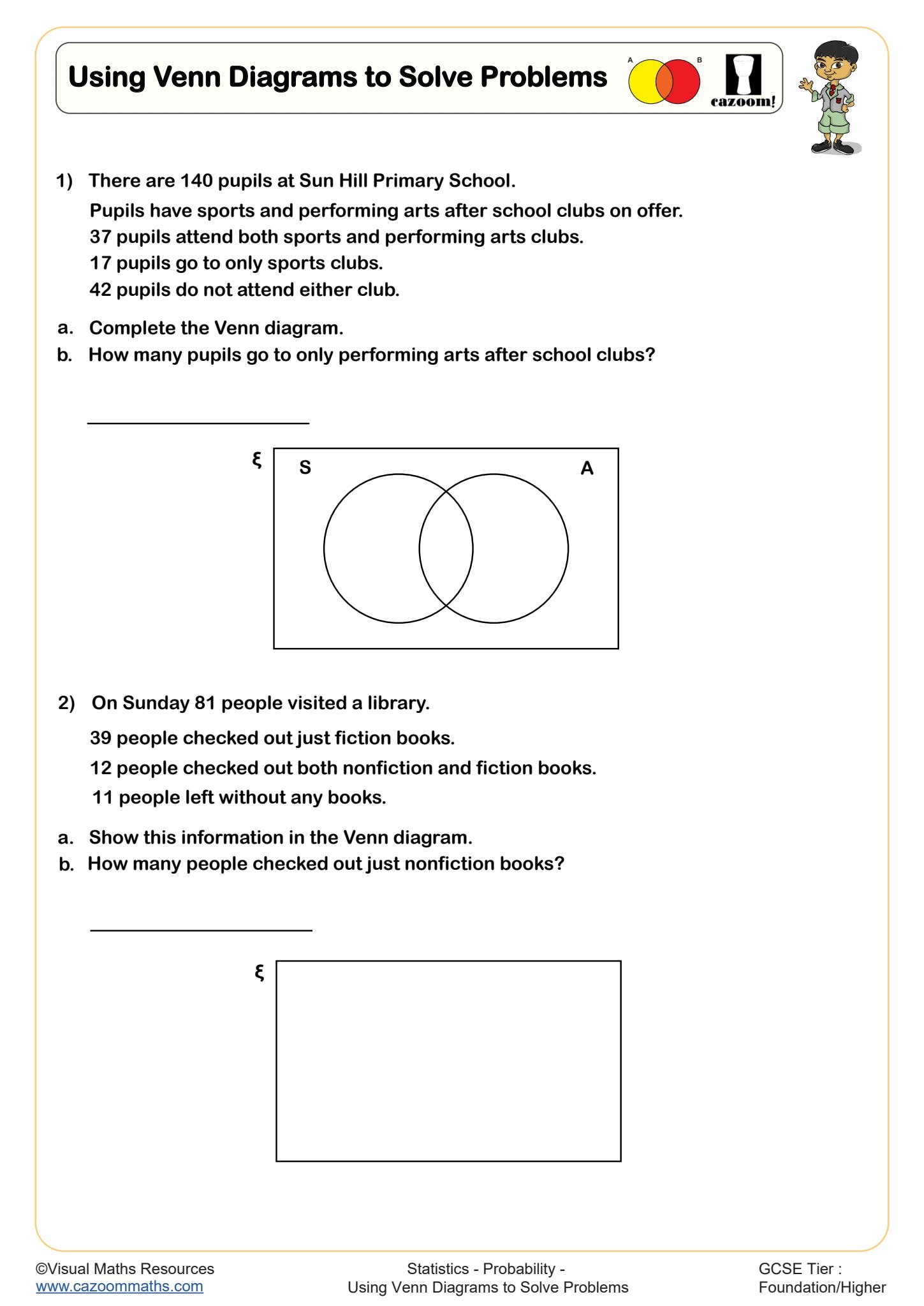
How Do These PDF Year 9 Probability Worksheets Strengthen Problem-Solving Skills?
Probability feels abstract until students work through enough examples to spot the patterns. That's what these worksheets do. Start with the basics - what does 0.5 actually mean? Then gradually work up to those sample space diagrams that always appear on tests.
We've structured the progression carefully. Playing cards provide a familiar context before moving into formal notation. By the time students hit Venn diagrams, they've built up the skills they need. The penny drops when they realise probability isn't about luck - it's about systematic thinking.
Students specifically develop:
• Quick mental calculations for basic probability
• The ability to spot when events are mutually exclusive (finally!)
• Working with tree diagrams and sample spaces
• Reading Venn diagrams without getting confused by overlapping sections
• Relative frequency through actual experiments
• Those set notation skills that seem pointless until Year 11
• Connecting probability to real situations
From Foundation Skills to Venn Diagrams: Unlock Faster Problem-Solving With These Activities
Our maths teachers designed 15 worksheets covering everything from simple probability statements to complex Venn diagram problems. Each focuses on a specific skill, with around 20 questions per sheet. Solutions show full working out - teachers know that method matters more than lucky guesses.
The collection includes these worksheet categories:
• Foundation Skills — playing cards contexts, true/false statements, and the sums-to-one rule
• Listing and Diagrams — sample spaces, systematic listing, and visual problem-solving tools
• Venn Diagrams and Sets — from basic circles to formal set notation (A and B levels)
• Experimental Work — dice experiments, relative frequency, and real data collection
• Advanced Concepts — mutually exclusive events, exhaustive outcomes, and expected frequencies
Having Trouble With Probability? Try Year 9 Statistics Resources
These worksheets solve real classroom problems. You know that moment when half the class gets it and half don't? Hand out different sheets based on ability. "Playing Cards and Probability" works for those still finding their feet. Your top set can wrestle with set notation independently.
The experimental probability worksheet is a winner - students actually roll dice and collect data. Suddenly, they understand why 1/6 doesn't guarantee a six every sixth roll. It's brilliant for those fidgety Friday afternoon lessons when you need them doing something hands-on. We've even seen teachers use these for emergency cover work (we've all been there).
One teacher told us she uses the Venn diagram sheets specifically before parents' evening because they're visual enough that parents can understand what their kids are learning. Smart move.
Every Student’s First Step to Practical Maths: Year 9 Probability Worksheets
Once students grasp probability properly, they spot it everywhere. We focus on genuine applications that make them understand the need to master these basic statistical concepts. For example-
The collection connects to scenarios like:
• Working out mobile phone insurance claims
• Weather forecast percentages (30% chance of rain means what exactly?)
• Football match predictions
• Those "chance to win" competitions
• Gaming drop rates and loot boxes
• Medical test accuracy (surprisingly relevant these days)
• Traffic light sequences on their route to school